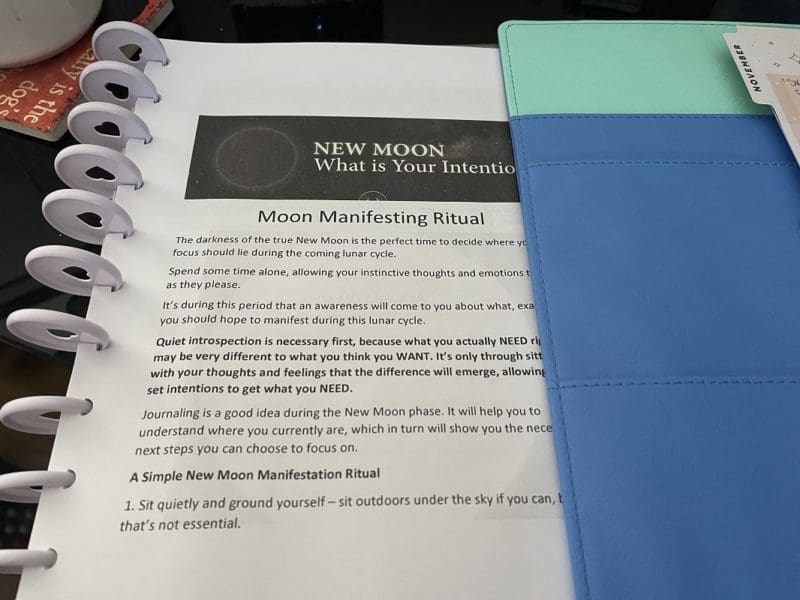Last Updated on July 16, 2025 by Kari
So many people are visiting this site looking for information on the Everyday Bliss quest. I think that stress is no longer a background hum in modern life—it’s a full-blown soundtrack. That’s what makes Paul McKenna’s Everyday Bliss quest through Mindvalley feel so timely and essential. The quest is designed to help people regain a sense of calm, happiness, and control, even when life is chaotic. It’s filled with practical tools, from hypnotherapy and neuro-linguistic programming to stress-release strategies that work on both the mind and body.
But like any transformation program, the results aren’t confined to the course itself. They grow deeper and more sustainable when supported by daily habits that reinforce the quest’s teachings. So for anyone who wants to take the quest or has taken the quest, here are five lifestyle habits that help hardwire your desired inner calm into everyday living.

1. Morning Journaling to Anchor Emotional Awareness
Right after waking up is one of the brain’s most impressionable times. That liminal state—where you’re still transitioning from the unconscious mind into waking life—is a golden opportunity for clarity and emotional recalibration. Morning journaling is a simple but powerful practice that amplifies the emotional intelligence and self-awareness promoted in Everyday Bliss.
Many people start their day in a rush of to-do lists and phone notifications. But taking 5 to 10 minutes to reflect on how you’re feeling, what you dreamed about, or what you’re hoping for that day sets the emotional tone. It also aligns with Paul McKenna’s emphasis on becoming more aware of emotional triggers and mental patterns.
Studies show that journaling can significantly reduce symptoms of anxiety and depression. A 2018 study in JMIR Mental Health found that individuals who practiced expressive writing for 15 minutes daily saw measurable improvements in their emotional well-being within just one month.
Pairing the Everyday Bliss techniques with a reflective practice like journaling helps ground the more abstract concepts into your day-to-day life. It also builds a stronger connection with your internal state—so that you recognize stress or tension earlier and can use the tools Paul teaches before they escalate.
2. Digital Boundaries to Protect Mental Bandwidth
One of the subtler insights in Everyday Bliss is how much stress we invite in—not through big, dramatic events, but through everyday overstimulation. Notifications, endless scrolling, and digital noise wear down the nervous system, often without us noticing until we’re anxious, irritable, or exhausted.
Creating digital boundaries is an underrated but deeply effective habit to protect the calm you’re cultivating. This doesn’t mean deleting every app or abandoning technology altogether—it means creating intentional windows where your mind can decompress.
For those doing the Everyday Bliss quest, the best time to practice this habit is during your “recovery” windows—after using one of Paul’s techniques or listening to the daily hypnosis. Instead of jumping into social media or email, give your brain time to absorb and settle into the new state. Over time, that space helps wire in the calmer responses more effectively.
Tip: Try setting “technology-free zones” in your home or creating daily screen-free hours. Even just one hour before bed without screens can improve sleep quality, which is crucial for stress recovery.
3. Walking in Nature to Reset the Nervous System
While Everyday Bliss is an inner journey, the outer environment you live in plays a huge role in how relaxed—or frazzled—you feel. One habit that aligns beautifully with the quest’s teachings, that I do everyday, is spending time walking in nature.
Research in Frontiers in Psychology has shown that walking in green spaces significantly reduces cortisol (the stress hormone), improves mood, and increases feelings of vitality. The practice is so effective that in Japan, it’s prescribed by doctors and known as Shinrin-yoku, or forest bathing.
Unlike a gym session, walking in nature doesn’t require much mental energy. It gives the brain a chance to process emotions and experiences in the background—especially helpful after listening to Paul’s hypnosis or practicing a calming technique. Plus, the repetitive rhythm of walking has been linked to enhanced creative thinking and emotional regulation.
Try to take a walk after completing your daily lesson from the quest. Let the body move while the mind processes. If you don’t have access to a forest or trail, even a walk around the neighborhood with greenery or fresh air can do wonders. Bonus points if you leave your phone behind.
4. Evening Visualization to Reinforce Positive States
McKenna’s background in hypnosis and behavioral science is grounded in one key idea: the mind doesn’t distinguish between real experiences and vividly imagined ones. This means that visualization—done with intention—can be as impactful as reality when it comes to rewiring how you think and feel.
An evening visualization practice ties directly into the themes of Everyday Bliss. As the day winds down, the brain becomes more receptive to suggestion again (similar to morning), making this a perfect time to anchor in positive states.
Visualization can be as simple as imagining yourself handling tomorrow’s challenges with calm confidence, or replaying a happy memory and letting it fill your body. The goal isn’t escapism—it’s about priming your nervous system for more ease and empowerment.
To make it a habit, create a 5-minute ritual before sleep where you lie still, take deep breaths, and walk through your visual imagery. I guarantee you are going to start to look forward to this habit very quickly.
5. Consistent Sleep Hygiene for Emotional Recovery
Everyday Bliss hinges on reconditioning how your brain and body respond to stress. Without quality sleep, those changes are harder to lock in.
Paul McKenna actually warns against using his hypnosis audio at bedtime—not because it’s harmful, but because it’s so activating. His session ends with cues to be wide awake and alert. That’s why it’s important to create a separate bedtime routine that supports winding down.
Build a habit of going to bed and waking up at the same time daily—even on weekends. Avoid screens 30–60 minutes before bed, dim the lights, and try calming rituals like herbal tea, deep breathing, or reading something light. By creating consistent sleep hygiene, you’re giving your brain the best possible foundation to support the emotional recalibration happening during Everyday Bliss.
If you are a part of Mindvalley’s Membership, take the Sleep Quest.
Final Thought: Building Bliss is a Lifestyle, Not Just a Course
The magic of Everyday Bliss isn’t just in Paul McKenna’s voice (although, let’s be honest, that’s part of it). It’s in how you bring the techniques into the real world and how you support them with your daily habits. Each of these five practices—morning journaling, digital boundaries, nature walks, evening visualization, and proper sleep—amplifies the work you’re doing in the quest.
Stress isn’t going to vanish. Life doesn’t get easier just because you took a course. I’ve learned those things over and over again. But with the right tools and habits, you get better at handling it. And that’s where the real bliss begins.


